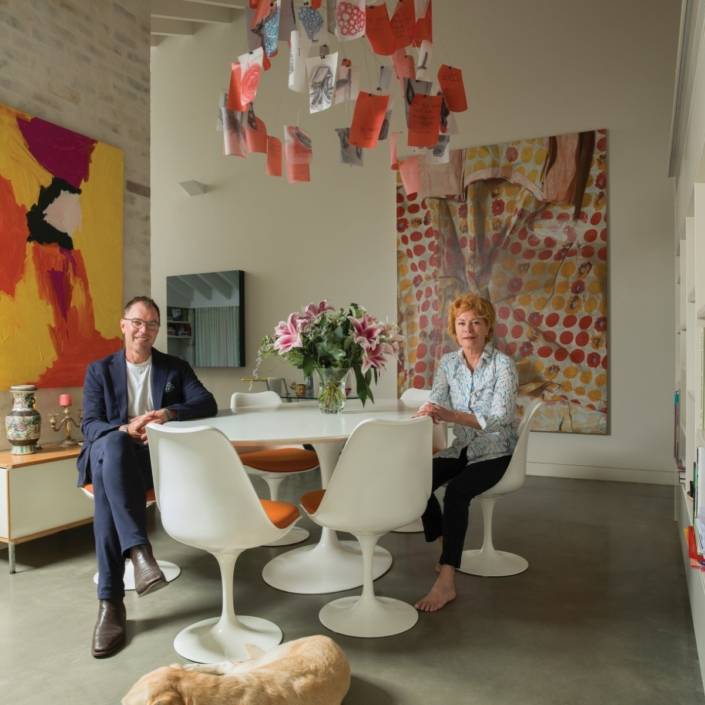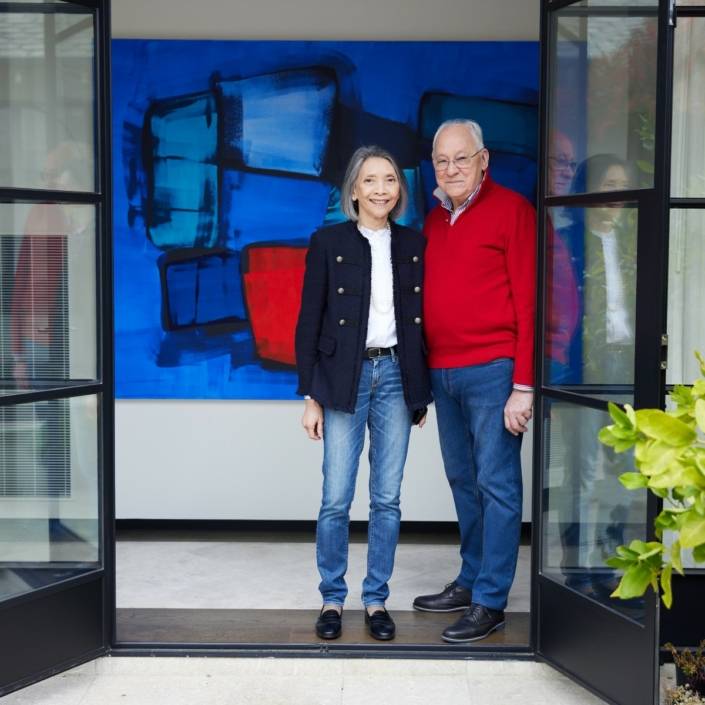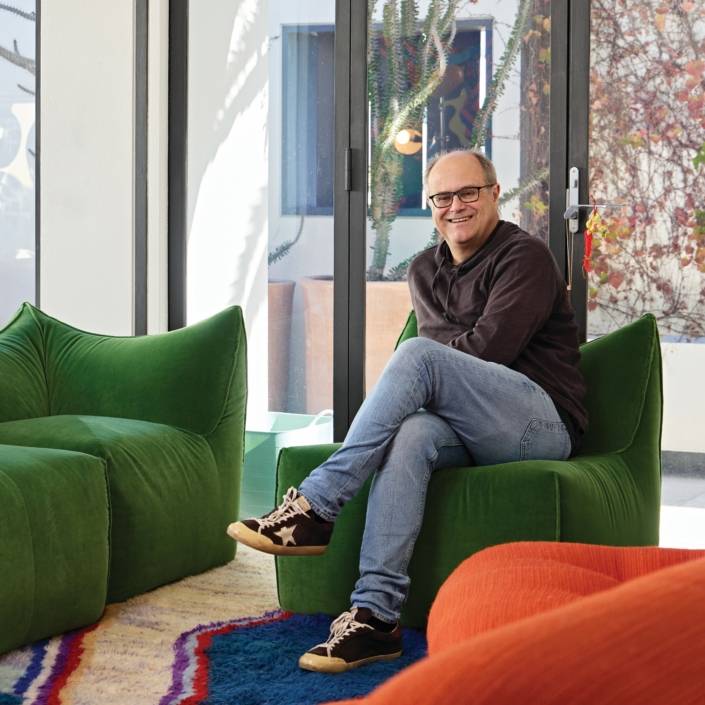Brian Tucker: Artkeeper
Do remote artists get ripped off by the Art Centres that sell their work? No, says collector Brian Tucker. He knows because he is their auditor.
Words: Alison Kubler
Photography:Damien O’Mara
Brian Tucker needs little introduction in his home town of Brisbane. He is best known as the accountant to artists and creatives whose artworks feature prominently on his office walls, making for surely one of the most pleasurable tax time experiences for visiting clients.
An avid collector and generous donor, his collecting has pulled focus in recent years more rigorously on indigenous art, informed in part by his professional work across those communities. The passion started Tucker says, “…years ago when I lectured on Professional Practice at the old Queensland College of Art and I went to the end-of-year graduating students’ exhibition, to support them, more than out of an interest in acquiring art. I
did, though, like one work on display and after some to-ing and fro-ing trying to get the artist to come up with a price, bought my first work. I thought to myself ‘this is interesting’ so started going to student shows, and exhibitions of (mostly) emerging artists and that
whole process introduced me to art generally, and contemporary art particularly. I saw collecting art as a way to satisfy several needs: to enrich my own life, to help (even in a meagre way) artists, and to let them know that what they were doing was important.”
And what of his interest in Indigenous art? “I really became interested in Indigenous art when I started auditing a couple of art centres on the APY Lands. Before that I had no real knowledge or understanding of the world of Indigenous Art. I now audit about 40 art centres across the Central and Western Desert regions, to Arnhem Land, the Tiwi Islands, Kimberley and Pilbara, and from very remote Communities such as Tjuntjuntjara in Western Australia’s Spinifex Country, to Baluk Arts on the Mornington Peninsula. The breadth of styles is quite astonishing, from the familiar dot paintings of Central Australia, to the carvings and weavings of the Top End, to very contemporary photography and drawing from younger Indigenous artists and designers. It’s very exciting!” Tucker’s enthusiasm is infectious, but Indigenous art can present a few challenges to a new collector.
Tucker admits “Because I’ve been going to those communities for many years now I’ve come to know the artists quite well, and come to appreciate the extent to which the story behind the imagery is so important, particularly for those senior men and women. As they grow older, and more frail, I see in the rawness of their work, a sense that these old people know their time is drawing to a close but there are things they still have to say through their art, and the urgency of that telling is reflected in the lack of any subtlety in colour or brush-strokes.”
This article was originally published in Art Collector issue 82, OCT-DEC 2017.






